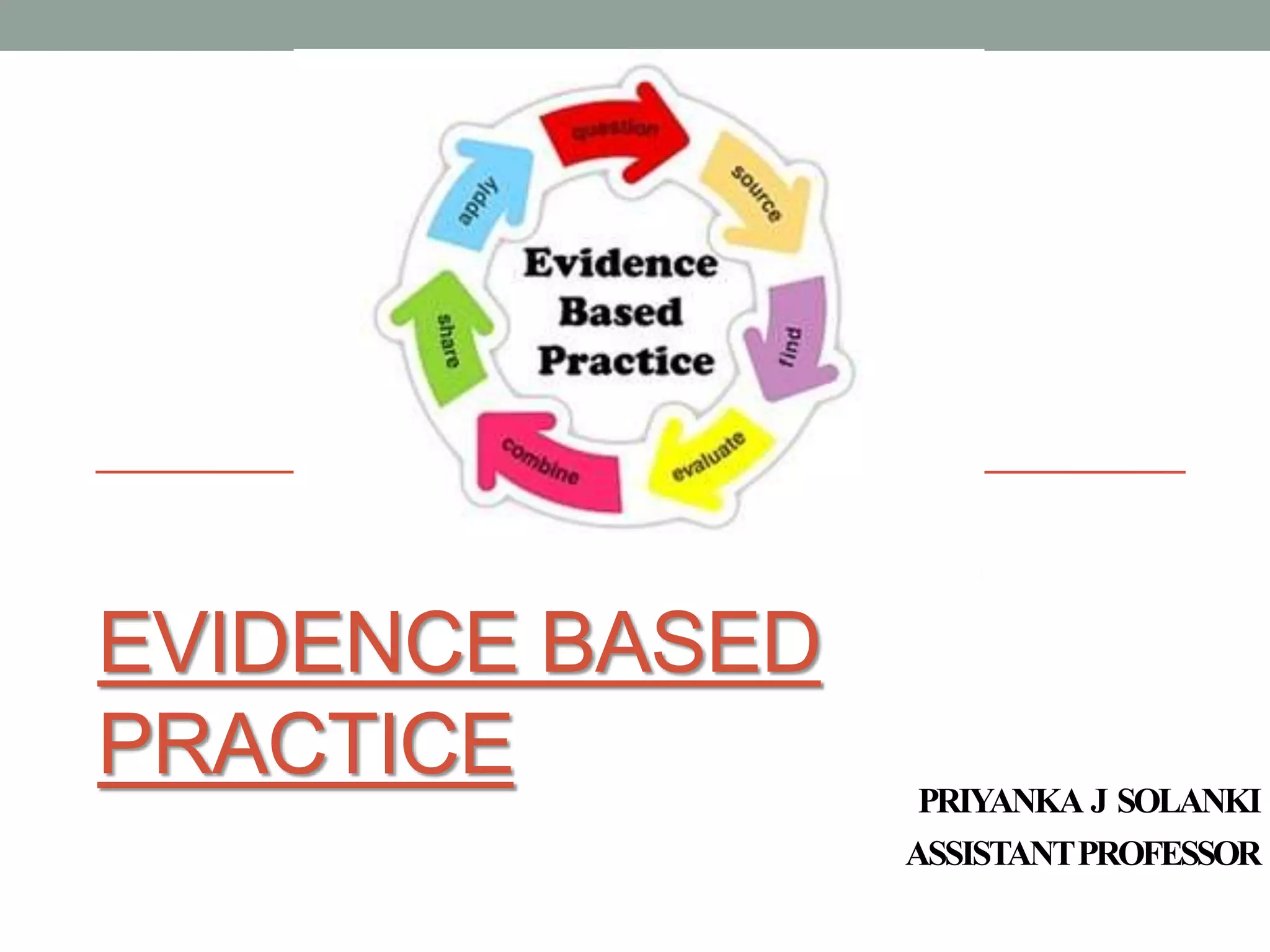The document discusses evidence-based practice (EBP), defining it as the integration of the best available research evidence, clinical expertise, and patient values. It outlines the key components of EBP as research evidence, clinical expertise, and patient values/circumstances. The five steps of EBP are also summarized: formulating a question, finding evidence, critically appraising evidence, applying evidence in practice, and evaluating outcomes. Barriers and advantages of adopting an EBP approach are briefly mentioned.





























